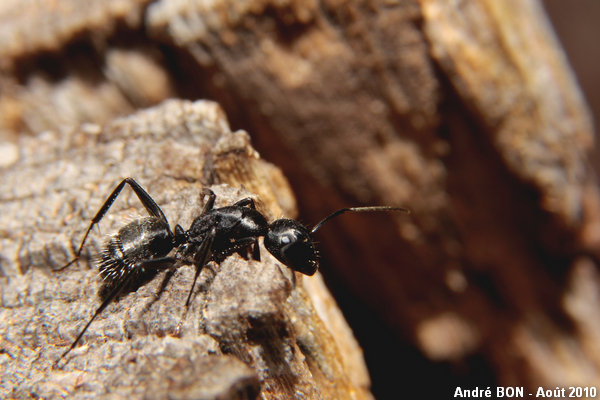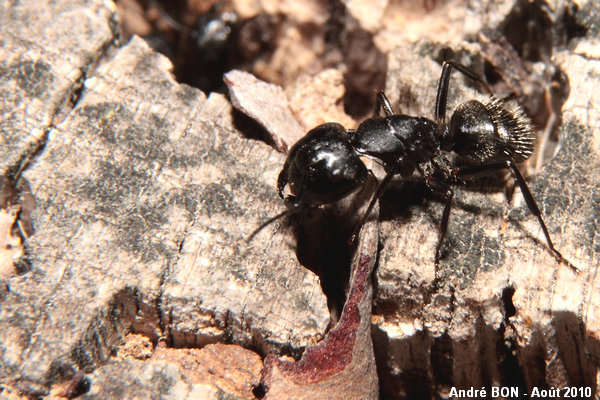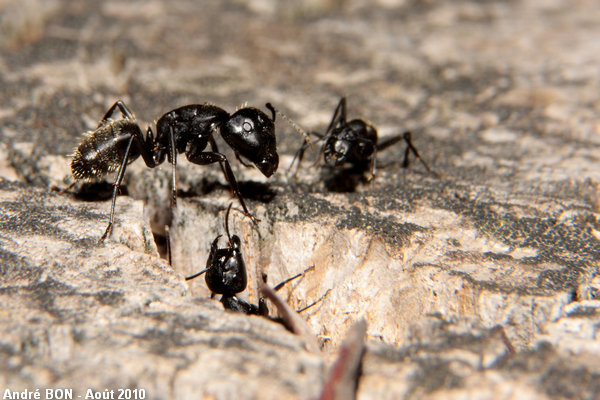


| Camponotus vagus (Scopoli, 1763) |



|
|
Scientific name: Camponotus vagus (Scopoli, 1763) Common name: French name: Order: Hymenoptera Family: Formicidae Wingspan : Females 14-17 mm, workers 7-11 mm. Biotope: Forests : Beech forests, pine forests. In tree stumps or trunks fallen on the ground. It prefers dry places. Geographic area: Europe north to Scandinavia, Asia east to the Altai mountains, north-western Africa. Observation period : All year long. Dispersion in May-June. |
Camponotus vagus is a large size black ant with an important whitish pilosity, especially on the gaster. It shows a one-segment petiole constricting the abdomen. It has the shape of an upwards pointing spine. The top of the thorax draws a continuous curve with no distinct step-down depression. The scape at the base of the antenna is not close to the clypeus. The clypeus does not show any median carina. Camponotus vagus feeds on small arthropods and from honeydew released by aphids. There are two kinds of workers, the minor ones which are the basic workers to feed the colony and the larger major ones, with stronger mandibles, which are in charge of the defence of the colony. There is a possible confusion with Camponotus aethiops. This last species always settle its colonies in the soil and its clypeus shows a well marked median longitudinal carina. |
| [To know more about the Camponotus vagus] [Next picture] [Top] |

|
A large black ant with an important whitish pilosity, a spiny petiole and a colony located in an old stump under a pine forest, this is Camponotus vagus. |
| [To know more about the Camponotus vagus] [Next picture] [Previous picture] [Top] |

|
The large size of the head and of the mandibles indicates here a major worker. |
| [To know more about the Camponotus vagus] [Previous picture] [Top] |

|
The major worker is guarding the entrance of the colony while minor workers are coming and going to collect food. |